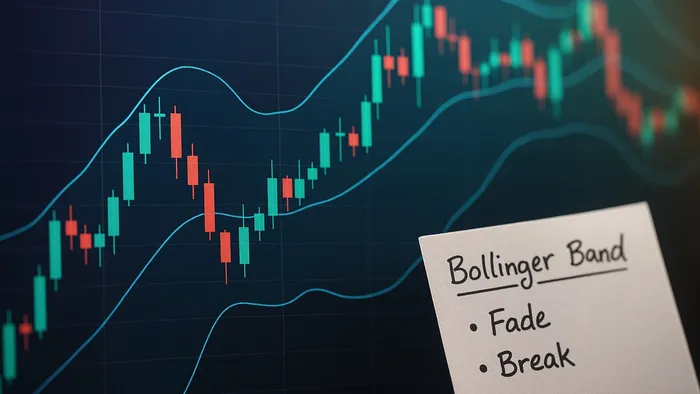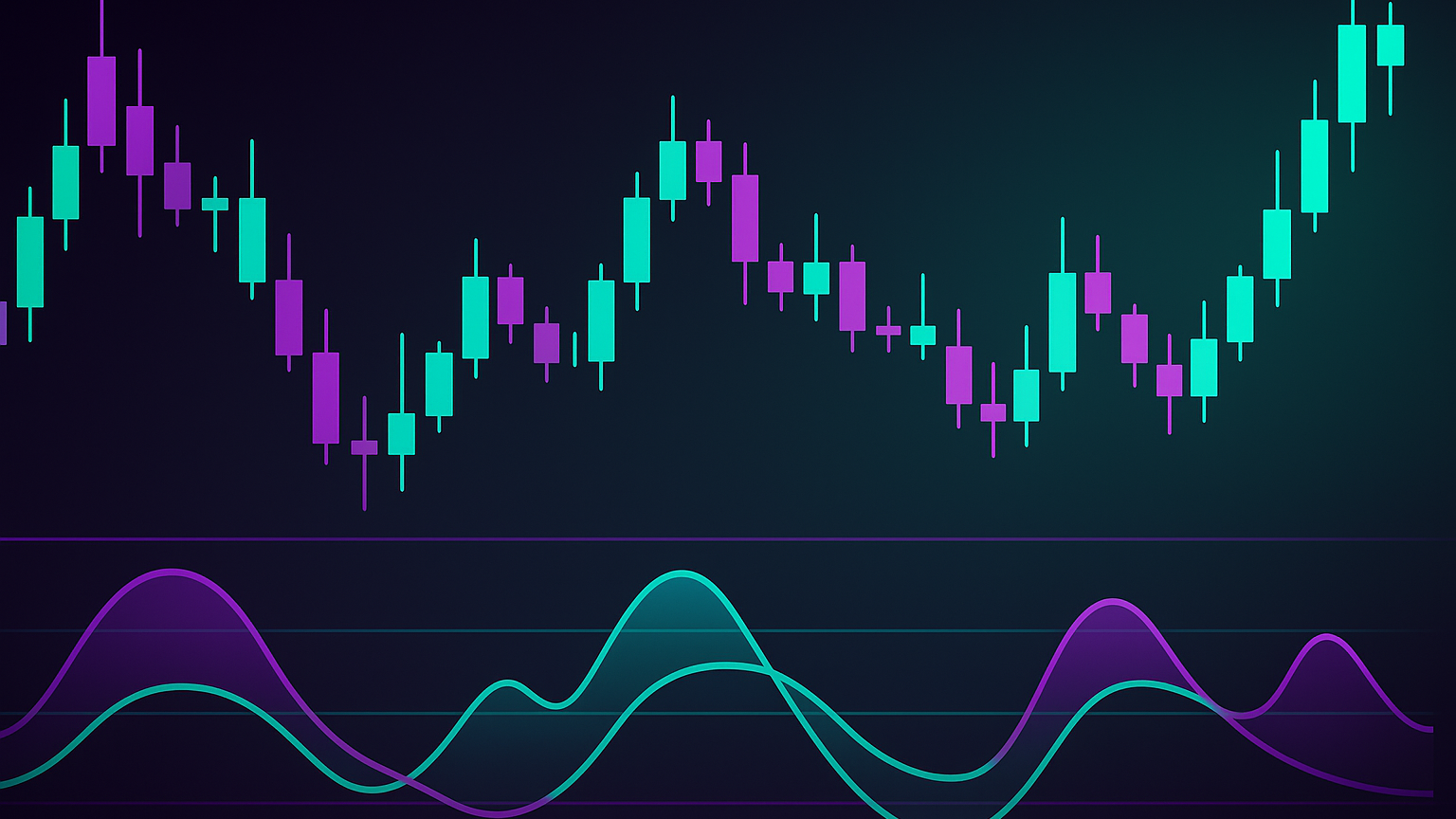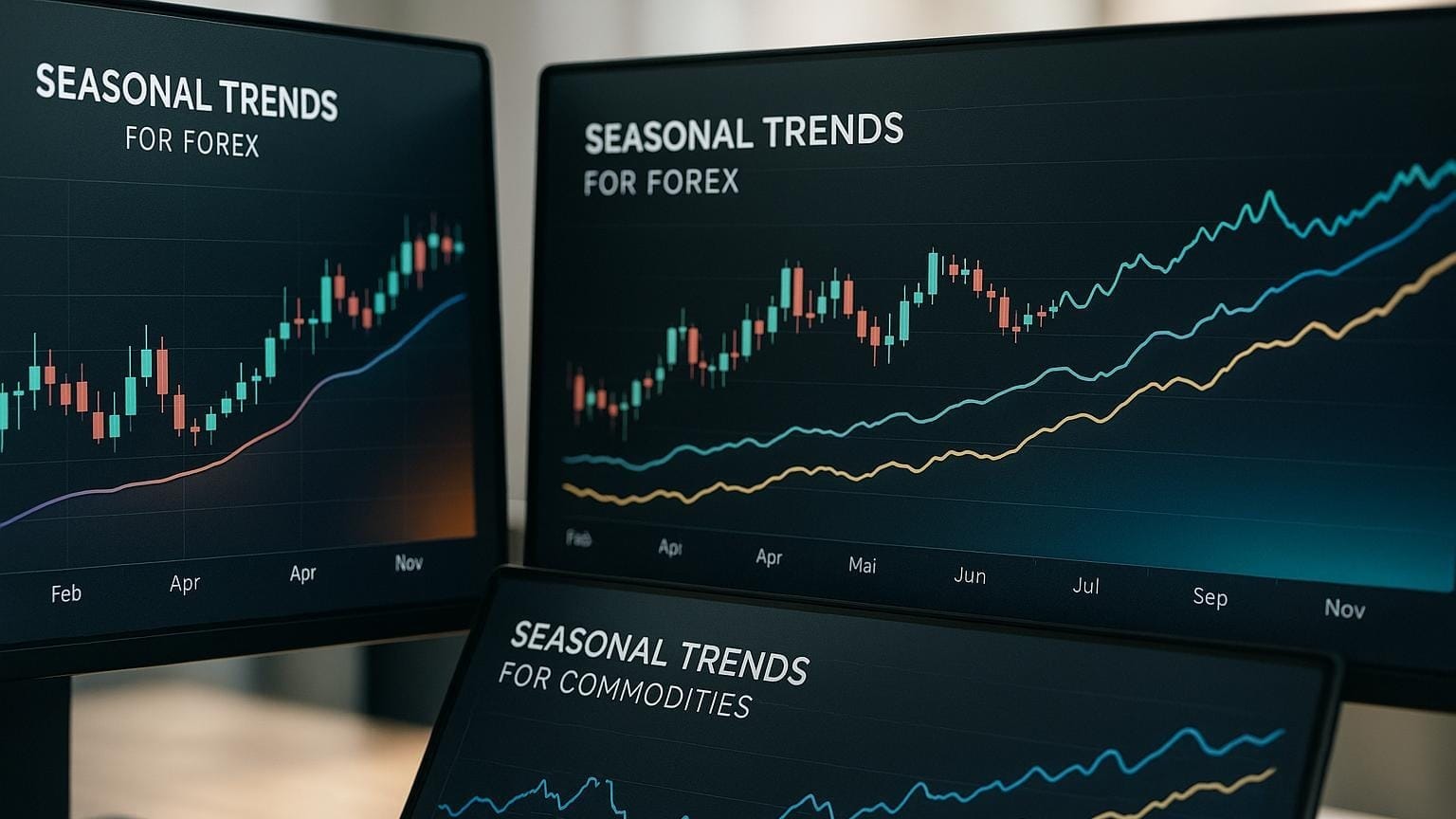Explore the effectiveness of Bollinger Band Fade and Break strategies, and learn how to optimize trades based on market conditions.
Which Bollinger Band strategy works better? It depends on the market.
- Fade Strategy: Best for range-bound or low-volatility markets, focusing on price reversals when prices touch the outer bands. Win rate: 58–62%. Risk-reward: 1:1.5.
- Break Strategy: Ideal for trending or high-volatility markets, capturing momentum when prices break beyond the bands. Win rate: 55–60%. Risk-reward: 1:2.5.
Quick Comparison:
| Factor | Fade Strategy | Break Strategy |
|---|---|---|
| Market Type | Ranging/Consolidating | Trending/Momentum |
| Win Rate | 58–62% | 55–60% |
| Risk-Reward | 1:1.5 | 1:2.5 |
| Entry Timing | After failed breakout | After confirmed breakout |
| Hold Time | 15–30 minutes | 2–8 hours |
Key Insight: Use the Fade strategy when the market is stable and the Break strategy for trending markets. Combine both for flexibility and better results. LuxAlgo’s toolkits on TradingView can refine these strategies with real-time insights and automation.
How to Use Bollinger Bands | Identifying Market Environments ...
How the Bollinger Band Fade Strategy Works
The Bollinger Band Fade strategy focuses on price reversals when an asset’s price touches or moves slightly beyond the outer bands. The idea is that extreme price movements often return to the average.
Basic Rules of Fade Trading
Key steps traders follow:
- Wait for band contact: Price reaches or slightly crosses the outer band.
- Look for chart patterns: Double bottoms, M tops, etc., confirm entry points.
- Check volume: High volume on band contact signals stronger reversal odds.
Best Markets for Fade Trading
This strategy works well where prices move predictably. Ideal conditions:
| Market Condition | Description | Strategy Adjustment |
|---|---|---|
| Range-Bound | Prices fluctuate between clear support and resistance. | Use standard settings (two standard deviations). |
| Low Volatility | Bands narrow due to reduced movement. | Watch for Bollinger Squeeze reversals. |
| Stable Trend | Prices move steadily without spikes. | Use wider stops for normal fluctuations. |
Timing entries and managing risk are crucial for these conditions.
Entry Points and Risk Controls
Fade trading demands precise timing and disciplined risk management:
- Entry Confirmation: Clear patterns near the bands.
- Stop-Loss Placement: Just beyond recent swing high/low (≈ 1%–2%).
- Position Sizing: Risk ≤ 1% of trading capital per trade.
Combine Bollinger Bands with the RSI for added confirmation. Wait for price to cross back through the middle band, then aim for the opposite extreme with stops just beyond the latest swing.
How the Bollinger Band Break Strategy Works
The Bollinger Band Break strategy captures momentum when prices move decisively beyond the bands. Unlike fading, this approach rides strong trends.
Basic Rules of Break Trading
- Go long on a firm close above the upper band.
- Go short on a firm close below the lower band.
- Watch band squeezes for setups.
- Confirm with momentum indicators.
Best Markets for Break Trading
| Market Condition | Effectiveness | Characteristics |
|---|---|---|
| Trending Markets | High | Strong, sustained movement. |
| High Volatility | Good | Clear breakouts and active trading. |
Signal Confirmation and Risk Controls
- Position Sizing with ATR: Use Average True Range to size positions.
- Stop Loss Placement: Opposite band relative to entry.
- Profit Targets: Minimum 1:2 risk-reward; exit on target or reversal signs.
Enhance accuracy with RSI or MACD to filter false signals.
Fade vs Break Strategy Analysis
Performance Metrics Comparison
| Metric | Fade Strategy | Break Strategy |
|---|---|---|
| Win Rate | 58–62% | 55–60% |
| Risk-Reward | 1:1.5 | 1:2.5 |
| Hold Time | 15–30 minutes | 2–8 hours |
| Best Timeframe | M15–M30 (≈ 63 % accuracy) | H4–D1 (≈ 68 % accuracy) |
| Capital Required | Base amount | ≈ 38 % more margin |
| Drawdown Profile | 15 % higher fluctuation | Smoother equity curve |
Example: EUR/USD Asian session shows a 73 % success rate for fade strategies, while break strategies reach 68 % during the London–New York overlap.
Advantages and Limitations
Fade Strategy Strengths
- Performs well when Bollinger Band width is under 2 % of price.
- Offers 3–5 setups daily.
- Lower capital requirement due to tighter risk.
- Excels in mean-reverting markets.
Fade Strategy Limitations
- Requires close monitoring.
- Higher drawdown risk during sudden spikes.
- Counter-trend trading tests discipline.
- Struggles during FOMC events (≈ 37 % success).
Break Strategy Strengths
- Captures long, sustained trends.
- ≈ 82 % success during FOMC-driven moves.
- Flexible entry timing.
- Smoother equity curve.
Break Strategy Limitations
- Fewer opportunities (1–2 setups daily).
- Higher margin need.
- ≈ 38 % initial failure rate.
- Trades take longer to develop.
Combining Strategies for Better Results
Using both approaches can improve outcomes. Fade success rises from 49 % to 65 % when paired with RSI divergence, while break strategies return 18 % on longer squeezes (20 days) versus 9 % on shorter ones.
Using LuxAlgo Toolkits for Better Results
LuxAlgo PAC and S&O Toolkits Guide
Price Action Concepts (PAC) and Signals & Overlays (S&O) simplify Fade and Break trades by automating critical analysis. PAC pinpoints reversal zones through pattern and order-block detection, while S&O confirms signals for added reliability.
| Feature | Fade Strategy Benefits | Break Strategy Benefits |
|---|---|---|
| PAC Analysis | Detects key reversal zones | Highlights breakout setups |
| S&O Signals | Confirms entries | Alerts on momentum breakouts |
| Screeners & Alerts | Finds mean-reversion setups | Filters optimal breakout conditions |
Strategy Testing with AI Assistant
The AI Backtesting Assistant evaluates millions of strategy combinations, letting traders:
- Test strategies across multiple timeframes
- Compare Fade and Break performance metrics
- Tweak entries and exits for shifting trends
- Tap a library of pre-tested configurations
"Our AI refines strategies, uncovers new tweaks, and boosts your win rate directly on our platform." – LuxAlgo
Learning from LuxAlgo Users
- PAC supports real-time multi-timeframe analysis.
- S&O delivers reliable confirmations, minimizing false signals.
- Custom alerts maintain disciplined risk management.
- Backtesting and screeners highlight favorable setups.
Premium subscribers unlock advanced signals and overlays, while Free plan users can leverage PAC for core price-action insights. All toolkits integrate seamlessly, enabling smarter, data-driven decisions.
Conclusion
Bollinger Band performance hinges on market conditions and tool selection. Fade strategies achieve a ≈ 60 % win rate with a 1:1.5 risk-reward, while Break strategies hold a ≈ 57 % win rate and a 1:2.5 risk-reward.
Break strategies excel in trending markets, whereas Fade strategies thrive in ranging environments. LuxAlgo’s toolkits enhance both approaches through automated pattern detection, real-time analysis, and AI-driven backtesting.
| Factor | Fade Strategy | Break Strategy |
|---|---|---|
| Market Type | Ranging/Consolidating | Trending/Momentum |
| Win Rate | ≈ 60 % | ≈ 57 % |
| Risk-Reward | 1:1.5 | 1:2.5 |
| Entry Timing | After failed breakout | After confirmed breakout |
| Direction | Counter-trend | With momentum |
Regardless of strategy, disciplined execution and sound risk management remain vital. With LuxAlgo, traders can apply these methods confidently and adapt to evolving market dynamics.
FAQs
How can I tell if the market is trending or range-bound to choose the right Bollinger Band strategy?
Observe Bollinger Bands: tight contraction signals low volatility and consolidation (range-bound), while expansion indicates high volatility and trending conditions. Price repeatedly bouncing between bands suggests a range; consistent moves beyond bands imply a trend.
What tools or indicators can help improve the performance of Bollinger Band Fade and Break strategies?
Combine Bollinger Bands with Moving Averages (trend confirmation), Keltner Channels (volatility filter), and momentum tools like RSI or MACD to reduce false signals and adapt more effectively.
How does LuxAlgo’s AI Backtesting Assistant enhance Bollinger Band strategies for various market conditions?
The assistant tests thousands of Bollinger Band variations across timeframes and market states, highlighting optimal parameters. By integrating PAC and S&O toolkits, it delivers data-driven tweaks that improve win rates and align strategies with current conditions.








